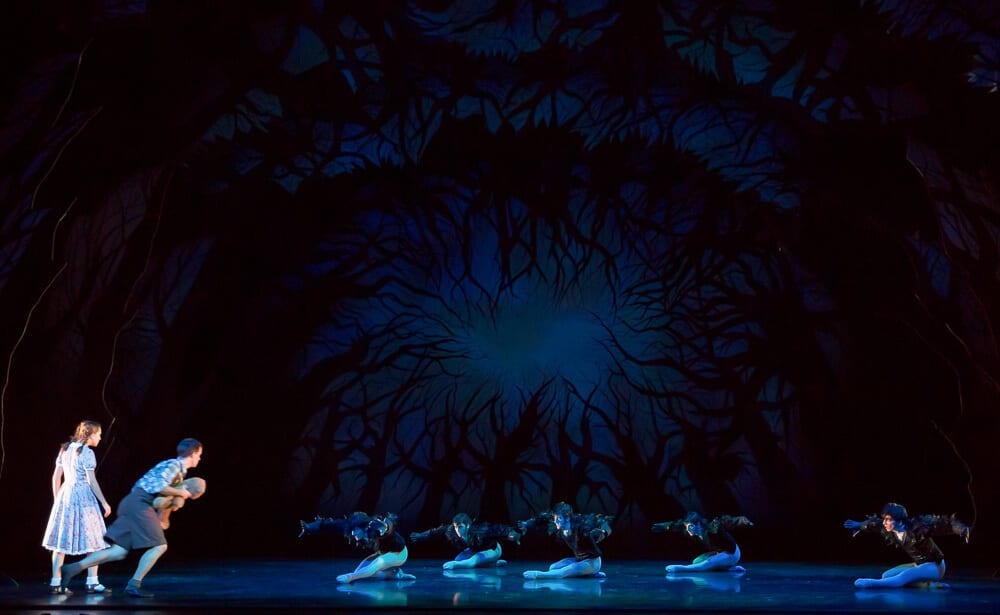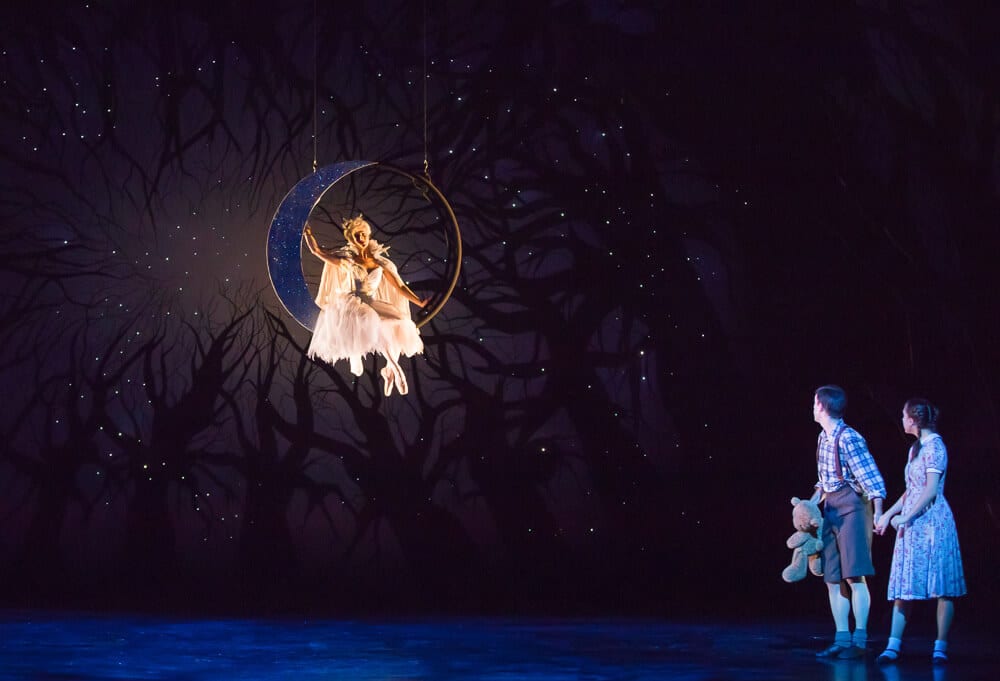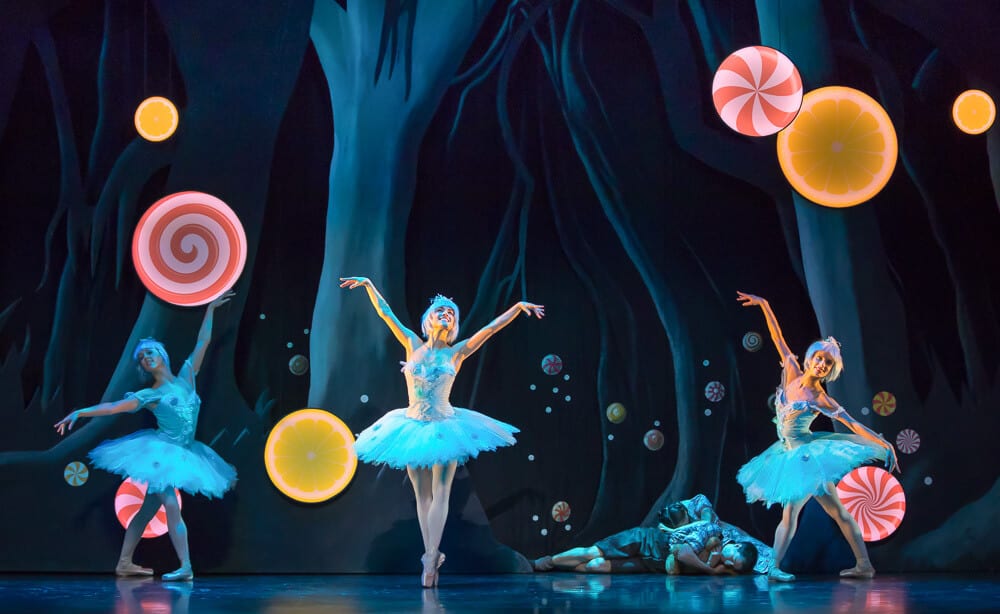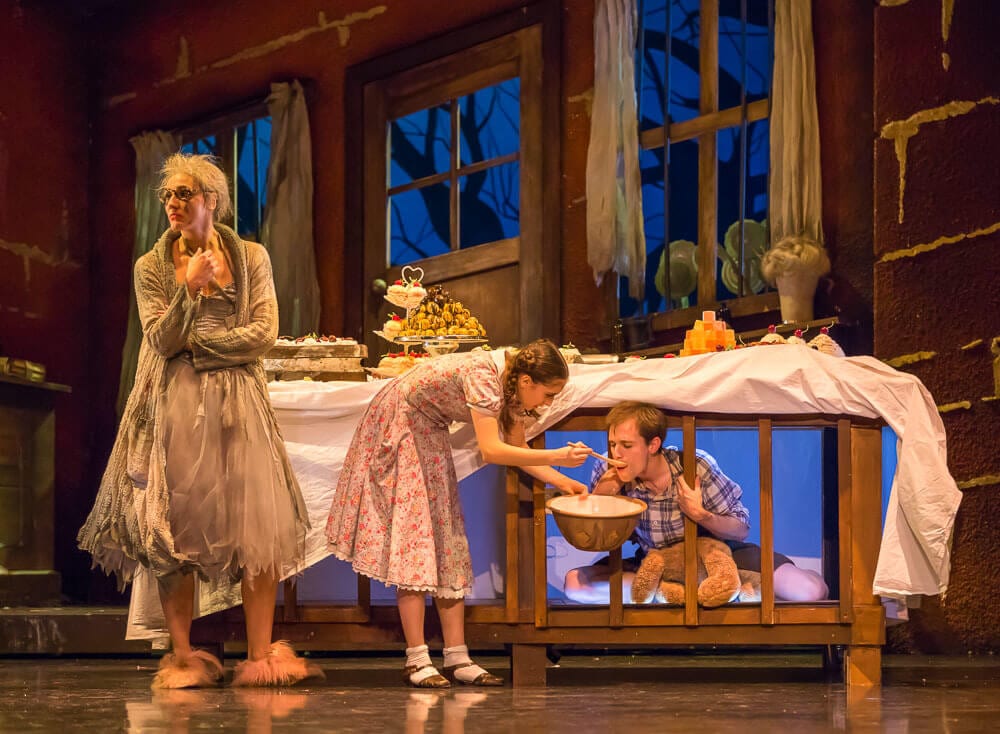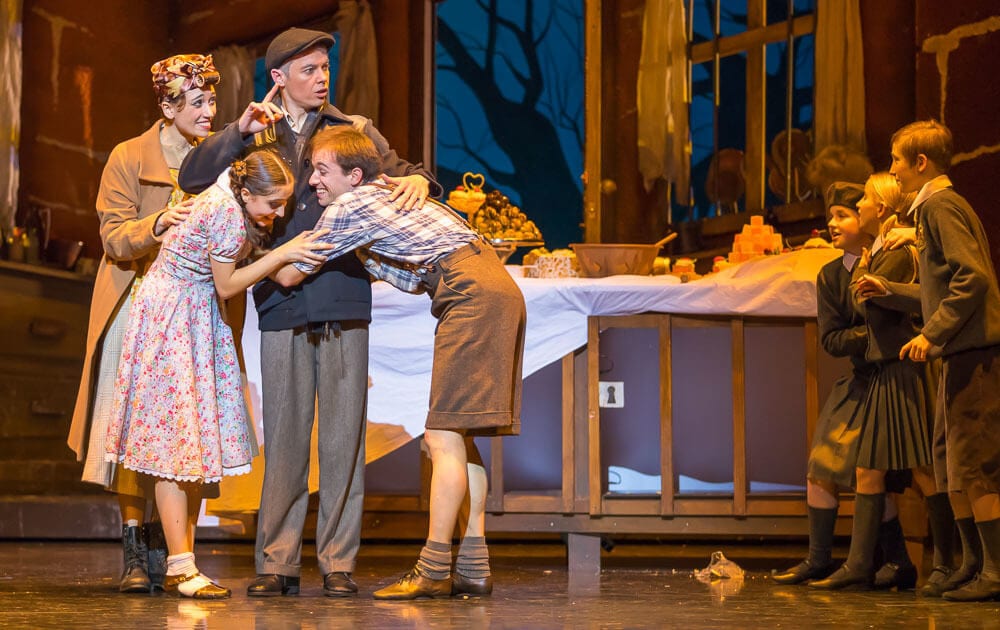A delicious family treat – and the witch is the cherry on top. In 2013, choreographer Christopher Hampson created and debuted first major ballet version of Hansel and Gretel using Engelbert Humperdinck’s famous 1891 opera score. It’s no surprise that the critically acclaimed production is still going strong.
Hampson doesn’t take all the credit for the production. In fact, he says the staying power of the ballet is thanks to the children and adults across Scotland that helped create it through a variety of residencies: the programme boasts artwork by some of these the children and a few of them even dance on stage. So what does the Grimm Brothers’ fairy tale look like now?
Picture a gothic forest with luminous lollipops suspended in the air and a gingerbread house peeking out from between the trees. Imagine a dream sequence in which the hungry children, asleep in the wood, watch their parents (Wraith and Harrison) transform from chain-smoking drinkers into an ethereal couple dancing a delicate pas de deux; or fantasise about chefs leaping across the stage with steaming platters of food. Now imagine ballet dancers gorging themselves on puddings, custard, and Scottish tea cakes, which are ‘just right’ Hampson says, ‘you just smash them in your face’. Ah Glasgow. Well, it is panto season I suppose…
Act Two is a visual feast, thanks to Garry Harris’ design. Act One, not so much – to begin with anyway. The minimal set reflects the bare cupboards of the children’s home before they run away on their adventure (the original Grimm plotline, where the parents abandon Hansel and Gretel in the woods was deemed ‘horrendous’ and rejected). The stage design shifts from evoking deprivation to gluttony. Although it’s slow to start, the first act is still stuffed with wonderful choreography and costumes. The dance of the ravens goes down particularly well and the dream sequence is exquisite, thanks in no small part to the orchestra’s sensitive interpretation of Humperdinck’s score.
We also get to enjoy a few contemporary dance flavours, with the rag doll sequence and the Sandman’s solo. Andrew Peasgood is on form as the wonderfully quirky Sandman who dusts Hansel and Gretel with glitter, in my favourite ballet/contemporary fusion of the production. His every movement hums with character. Likewise, Kayla-Maree Tarantolo and Constant Vigier completely inhabit the roles of the two children (as well as being outsized by giant chairs).
Soloist Marge Hendrick has a tough role as the witch. It’s a challenge for any dancer to play a dual character role – think of the black swan and the white swan (Odette/Odile) in Tchaikovsky’s Swan Lake. It’s also not often that ballerinas get the opportunity to be funny. Hendrick does a brilliant job of playing the witch, who spends most of the story in glamorous disguises, before revealing herself as a comical and sinister hag with cannibalistic intentions. Hendrick makes the transition seem effortless and every manifestation of the witch convincing. In one act she barely touches the ground, borne by glittering ravens, and wearing a billowing white cloak. The effect is magical. In another act she wears fluffy slippers, moves as though inspired by the ministry of silly walks, and has an axe-wielding approach to gobbling up small children. Her performance alone is unmissable. No doubt this production of Hansel and Gretel will continue to enchant audiences for years to come.
<iframe width=”560″ height=”315″ src=”http://www.youtube.com/embed/hpGAPEinwFY” frameborder=”0″ allowfullscreen></iframe>

